To make sure your backpacking adventure gets off to a great start, you should ensure that you have the best backpack available for the purpose. After all, the feeling of carrying nothing else but the essentials and walking into the unknown is incomparable to anything else to an adventurer. But if you have actually sat down and considered what type of backpack you want for your travels, you know it is no easy task. This is because they are available in all shapes and sizes these days and this task can become overwhelming if you are new to this game.

The question, how big a backpack do I need is one which has been asked countless times by millions of backpackers around the world. There are a number of factors that influence this buying or choosing decision. But when you ask how big a backpack do I need, you should always put forth these questions:
You see, when you ask yourself these questions, things will start to fall into place. Once you have an idea of the type of gear you will be carrying with you, you will start getting a clearer picture of the kind of rucksack you want to carry with you on your journey. The size of your backpack will depend entirely on these factors, so once you consider them, there are fewer chances of you running out of space.
We have seen many travelers who set out on a long journey from their home country, acquiring items and memorabilia on their way, and then ending up with several bags with them, making the travel inconvenient. This is because whether you are a solo traveler or traveling with a partner, you will be constantly worried about that extra baggage you have picked on the way.
Table of Contents
Too Many to Choose From
Once you have decided on your travel gear, another problem arises, and that is the multitude of choices you have in terms of the various backpacks available on the market. The case gets even more confusing if you are trying to select a backpack, and most of the companies that have their wares on display do not inform you about how to go about selecting a backpack. You are flooded with options, each looking better than the last one, and with no way to tell which one is suitable for you, you would be utterly confused! For that singular purpose, you may want to check out our reviews to help you make up your mind.
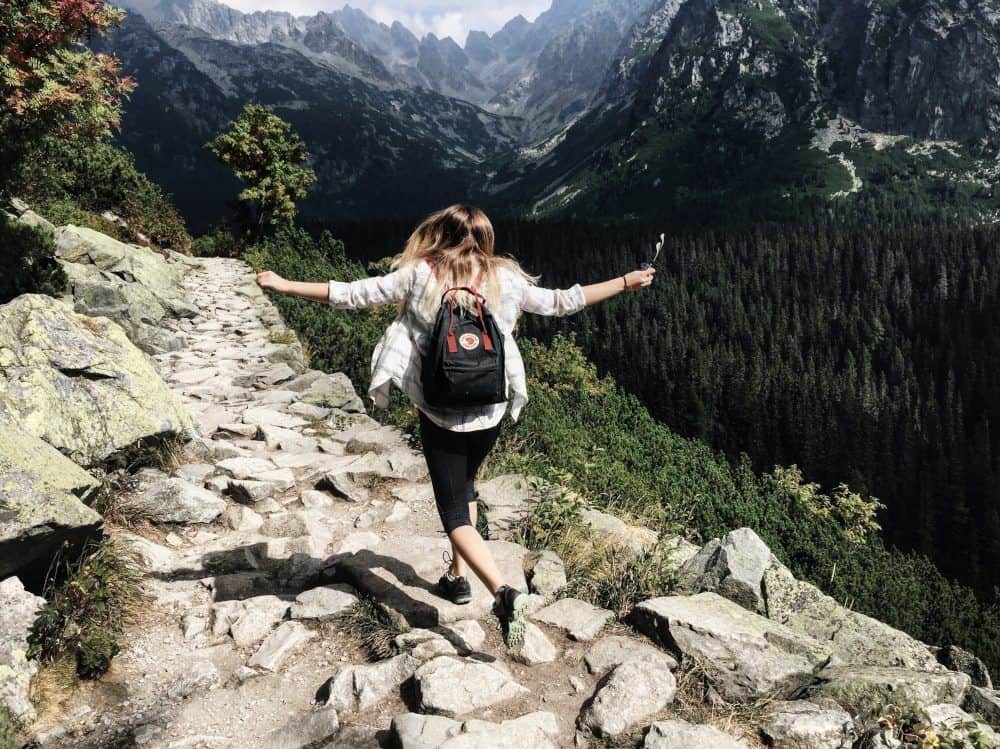
You may get all excited by that one backpack which has a folding slider with wheels and the manufacturer’s claims that you could wheel it virtually anywhere. A few months later, when you are on a purely hiking trip, you may find out to your chagrin that the manufacturer was not lying about the “virtual” part, because the wheels don’t roll so well on mud roads! Remember, that as a first-time buyer, you may get something that would work for you on a single trip and you would probably be okay with it, but it may not be the ideal buy for you.
There is no straightforward way to choose a backpack, we think we have driven that point across. There are too many manufacturers, too many types of builds and of course, too many sizes to consider from. So how big is too big, and how small is too small? As we said earlier, the size of your pack will be determined by the amount of gear and clothing you want to carry with you.
You could be carrying lightweight clothes, a couple of energy bars or a water bottle, or you could be carrying full-fledged cooking gear (for those hikes on a trail), or a tent and sleeping bag. We will note down a few points now that will help you decide on “how big a backpack do I need?”
How Big Is a 20 Liter Backpack?
These backpacks, otherwise also known as daypacks, are the smallest of the backpacks available on the market. The backpacks are designed to hold enough gear and food for a light packer and are more than sufficient to carry you through a couple of days.
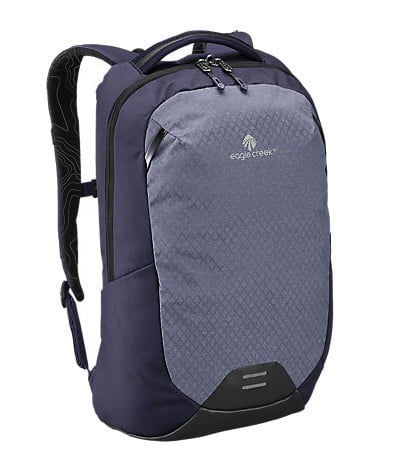
Source: eaglecreek.com
Taking This Backpack on a Hike
If you are a hiker who just loves to hike no matter the type of weather, carry a steady supply of energy bars enough for a couple of nights and a bit of camera gear, this backpack is for you. What you may want to consider before buying one of these backpacks is that you would not have much space for anything extra that you may want to pick up on your hike. This could be a new knife, a memento or even driftwood for that matter.
But having said that, if you consider yourself a packing genius, you can get by with this daypack. Of course, before buying a backpack, you may want to measure your torso length to find out whether it is suitable for you or not.

Taking This Backpack While Traveling
Consider carrying everything you would need to fit in this backpack and taking it as carry-on baggage on a flight. A small bag like this is always a must when you are traveling light on a flight. Not only your valuables such as your cameras or your tablet device are secure (not to mention within reach), you can also bring in all your essentials in one compact package!
Every airline has a set dimension for a carry-on bag, and in case your bag has wheels and large handles, it may not fit in the overhead luggage compartment, which can be a big inconvenience for you and your fellow travelers.
So before setting out with your backpack on a flight, always check its dimensions so that you are not caught napping!
How Big Is a 30 Liter Backpack?
These types of backpacks are the first choice for people who travel a lot like to travel light, and often do overnight hiking. Though they may not look like much, these backpacks are usually sturdy and can carry a lot of equipment which may include a tent, sleeping bag and a pad, and even cooking gear.
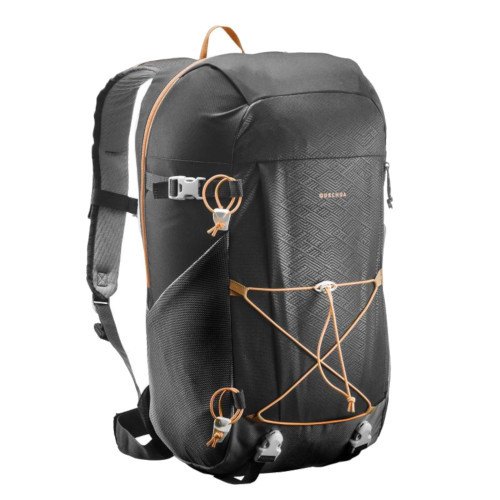
Source: decathlon.co.uk
Taking This Backpack on a Hike
If you are someone who likes going on overnight, over-the-weekend trips, you would need a big-enough backpack to last you as long. The key to pack for a trip like this is keeping the gear light and to carry just enough necessities with you, such as enough clothes for the day of travel and the next day, a tent, sleeping gear and of course, food and water.
But don’t worry, this backpack serves more than its purpose if your day trip extends and you have to carry some extra gear. If you have already taken that into consideration, you would want to invest in more lightweight equipment, such as your cooking gear, lighter tents, lighter sleeping bags and so on. You get the picture. For more info see our guide on how to pack a hiking backpack.
When you are thinking of packing lightweight gear, do not neglect the little detail about where you would be traveling and what would be the weather conditions. If you are heading towards extreme weather conditions where you would require heavy gear, do not hesitate and consider upgrading the backpack! Traveling light is a fun activity to indulge in, but at the same time, you should not sacrifice your safety, warmth and comfort. Take our word for it, many have packed their backpacks a little too lightly and have suffered later.
At the same time, you should also think about a situation if you have to spend an extra day or two on the hike, and one of the most important factors to consider is the food you will carry. The two items that can take up significant space in your backpack are food and water and while packing, you should always carry a little extra, just in case. It never hurts to have some extra rations for you (this, in case your journey is delayed and you do not want to shell out extra on bland and expensive airport food or at an unknown store you come across).
If you are not traveling alone and your partner (or other fellow travelers) is carrying a similar backpack (or larger), and carrying enough food and water to last the length of your journey (and then some), this backpack size is sufficient for you. In case you are not sure how much is enough, you may want to consider upgrading your backpack for a larger size.

Taking This Backpack While Traveling
If you are a light packer, this size of the backpack should be more than sufficient for you. Also, it may depend entirely on the kind of gear you are carrying with you. If your backpack is a size we mentioned earlier (20 liters), you will always pack according to that size and that would mean leaving a few things behind. Ideally, this is a good regime to follow and you will only pack what you need.
Say, if you’re headed towards the humid environs to say, somewhere in India, where you are likely to change your clothes more than once a day (if you are not that fussy about body odor, we sympathize with your fellow travelers), and that means carrying more change of clothes with you. But, on the other hand, if you are headed towards the slightly more pleasant climes of Thailand and plan nothing but to roam around in your boxers and indulge in some beach volleyball, this backpack would serve you well.
How Big Is a 40 Liter Backpack?
If you ask the people in the know, they will tell you that the ideal size of a backpack would be anything between 30 and 55 liters. A lot of hikers, after a few experiences, claim that anything between 30 and 35 liters has proven inadequate for them, and at times, they have had to rely on carrying a small foldable backpack inside their larger backpack to carry extra items.

Source: osprey.com
Taking This Backpack on a Hike
For those times when a 30-liter backpack is not enough, enter the 40-liter backpack, which many consider the ideal size for lightweight, overnight hiking. A much larger backpack would pack everything you need (and then some) with ease, but then there are those airline restrictions to worry about and you might end up checking it in like a normal traveler.
Many hikers have encouraged the practice of buying a 40-liter backpack as the first backpack, because of its compact size and a slight advantage over the regular 30-liter backpacks. Not only they have the capacity to carry all your belongings, but they are also the most ideal for a weekend trip and can carry essential camping gear.
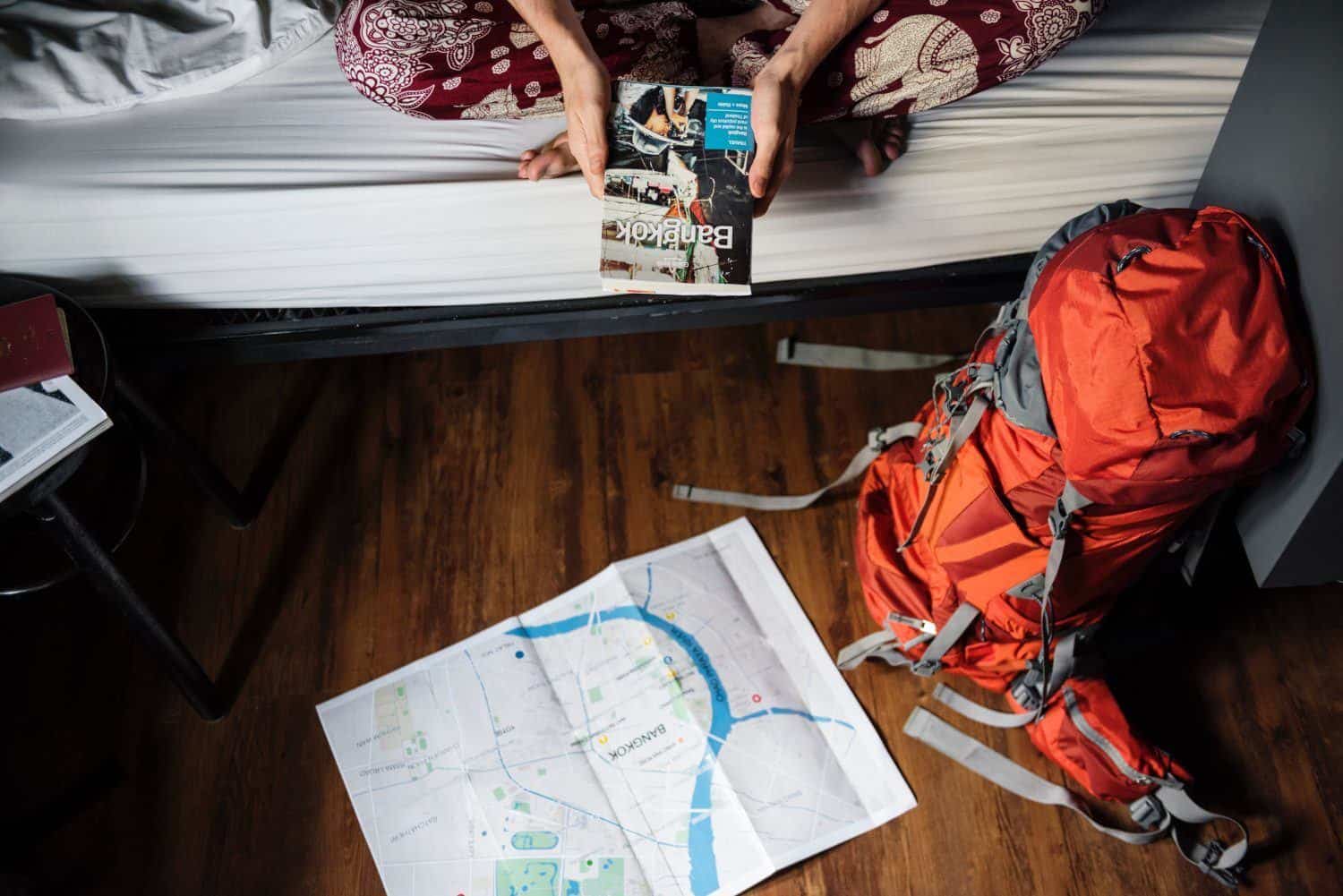
Taking This Backpack While Traveling
Most airlines recommend that any bags over 45 liters should be checked in, so this bag falls in the perfect overhead-baggage compartment category, and hence saving you a lot of time at the baggage belt.
Please also note that if you are going on a trip that is likely to last more than 2 weeks, this backpack might fall short of your expectations. Also, think about your destination; most towns these days will have everything that you need on your travels, be it medical or food supplies, or even replacing torn or old clothing.
But all said and done, this size of a backpack is excellent if you are going to be traveling light, carrying a couple of books (or a Kindle or an iPad if you please!), bringing back a few souvenirs and even travel speakers.
That said, there is very little difference between the capacities of the two bags.
How Big Is a 50 Liter Backpack?
If hiking and backpacking is not only your passion, but also a major part of what you do for a living, this is the most ideal backpack size for multi-day or long-term backpacking, or both of them combined. These backpacks are designed to carry considerably more gear, food and clothing than their smaller counterparts (obviously!), and are usually available in all-weather variants. This is where the size of backpacks starts getting bigger and bulkier, simply because they can carry more of everything (such as food, fuel, and clothing), and other equipment such as mountaineering, first-aid and survival gear with ease.
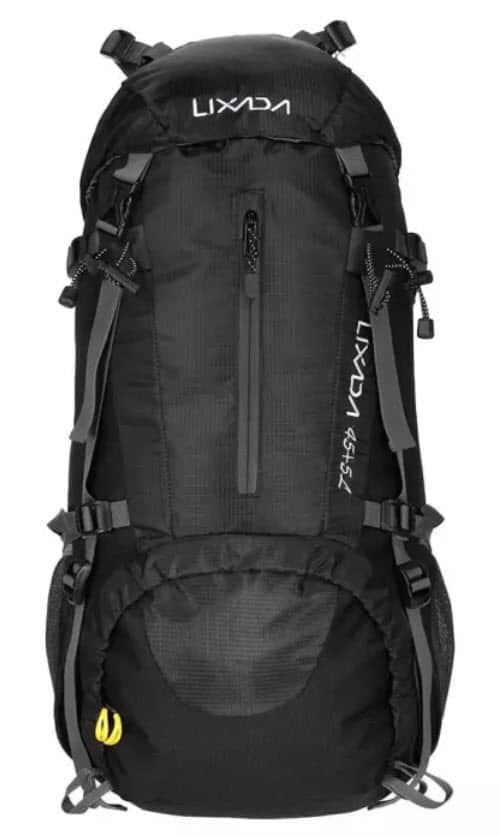
Source: lixada.com
Taking This Backpack on a Hike
This backpack is your best friend if you are looking to go on a multi-day hike where you would be required to carry serious equipment such as clothing used in different weather conditions (rain jackets, down jackets, mufflers, heavy winter or scuba clothing), specialized tents, sleeping gear and so on.
If you are getting restless that your backpack is getting heavier and heavier as you keep piling things in it, you might have a thought that “Hey, I should get rid of some of my stuff!”, but remember to not skimp on your camping stuff, especially the gear you would need for your nights, for example, the sleeping bag. You will thank yourself later when you have hiked all day long and need a good night’s sleep. For this purpose, you would need a comfortable sleeping bag, an inflatable pillow (those who hate doing this before going to sleep may very well carry softer materials with them to make a makeshift pillow) and a sleeping pad.
Remember that you are out for a hike, so you can safely set aside your lightweight gear (don’t throw all of it out though!) and instead concentrate on carrying comfortable and ample clothing and other essential gear.
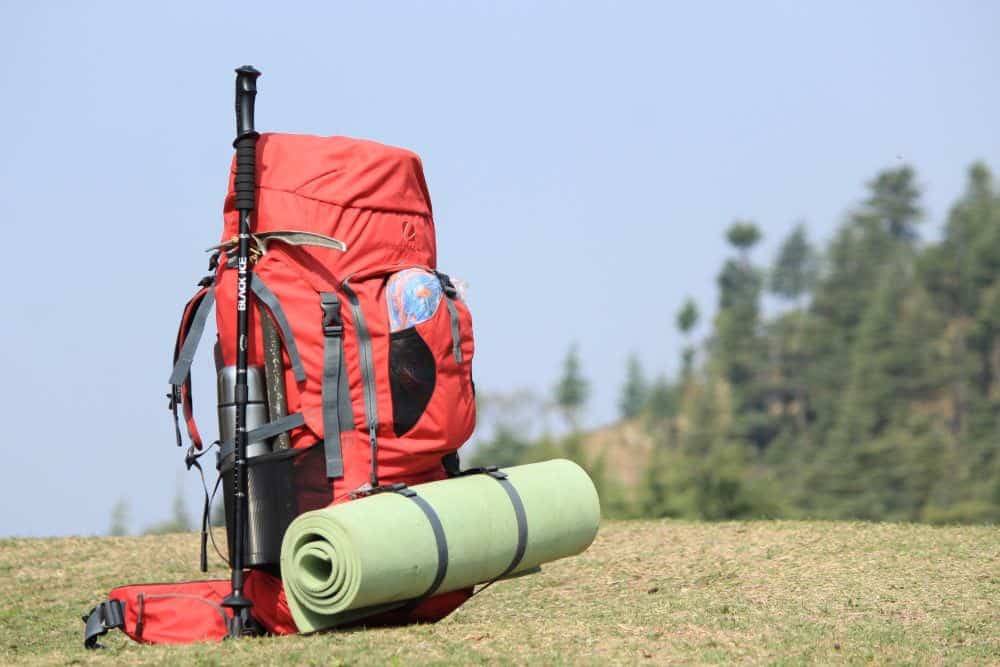
Taking This Backpack While Traveling
If you are going to be traveling through countries where the weather is uncertain and changes constantly (such as Asia), or Europe, a 50-liter backpack is your best bet. You will never have to visit a washing outlet or a laundromat if you are carrying one of these backpacks because they can carry a whole lot of change of clothes.
We have said this before, and we will reiterate this again — these are the best packs to carry on multi-day or long-term backpacking trips. But this does not essentially mean that you should get over-enthusiastic and start piling stuff in your backpack at a breakneck speed.
Don’t forget that you will be the one carrying this backpack with you at most times, so you need to be comfortable while carrying it and not taking pit-stops every 15 minutes! Choose the backpack carefully, and your backbone will thank you!
Hopefully, this has quenched your curiosity with regards to one of the questions you would have have had at the start of this article, “how big a backpack do I need?”.
Now, we can take a quick look at some other important factors for choosing a backpack.

Backpack Features You Should Look For
External Attachments
No matter the size of your backpack, external attachments add versatility to it. It acquires the extra ability to attach more accessories to it by the means of loops, daisy chains, and bungees. With the assistance of these attachments, you can achieve a lot, such as attaching wet garments outside the backpack to dry off in the sun or attach solar-powered gadgets (these accessories are rapidly becoming more and more common these days), not to mention attach tents or sleeping bags if your backpack is full. Though, we do not recommend attaching your sleeping gear outside your backpack because this way it is exposed to the elements and you would not want to rest on a soggy sleeping bag after a long day’s walk or hike.
Ventilation
This feature is very useful if you are traveling in extremely hot or humid climes. The idea is to keep the back panel away from your skin as much as possible, and for this purpose, manufacturers use different types of materials such as a mesh or a framing system. If you have ever wondered the presence of these materials on your backpack, this is it. Your backpack’s performance is not quite affected by it, but it goes a long way in keeping you comfortable, especially when the sun is out and your t-shirt is literally sticking to your back.
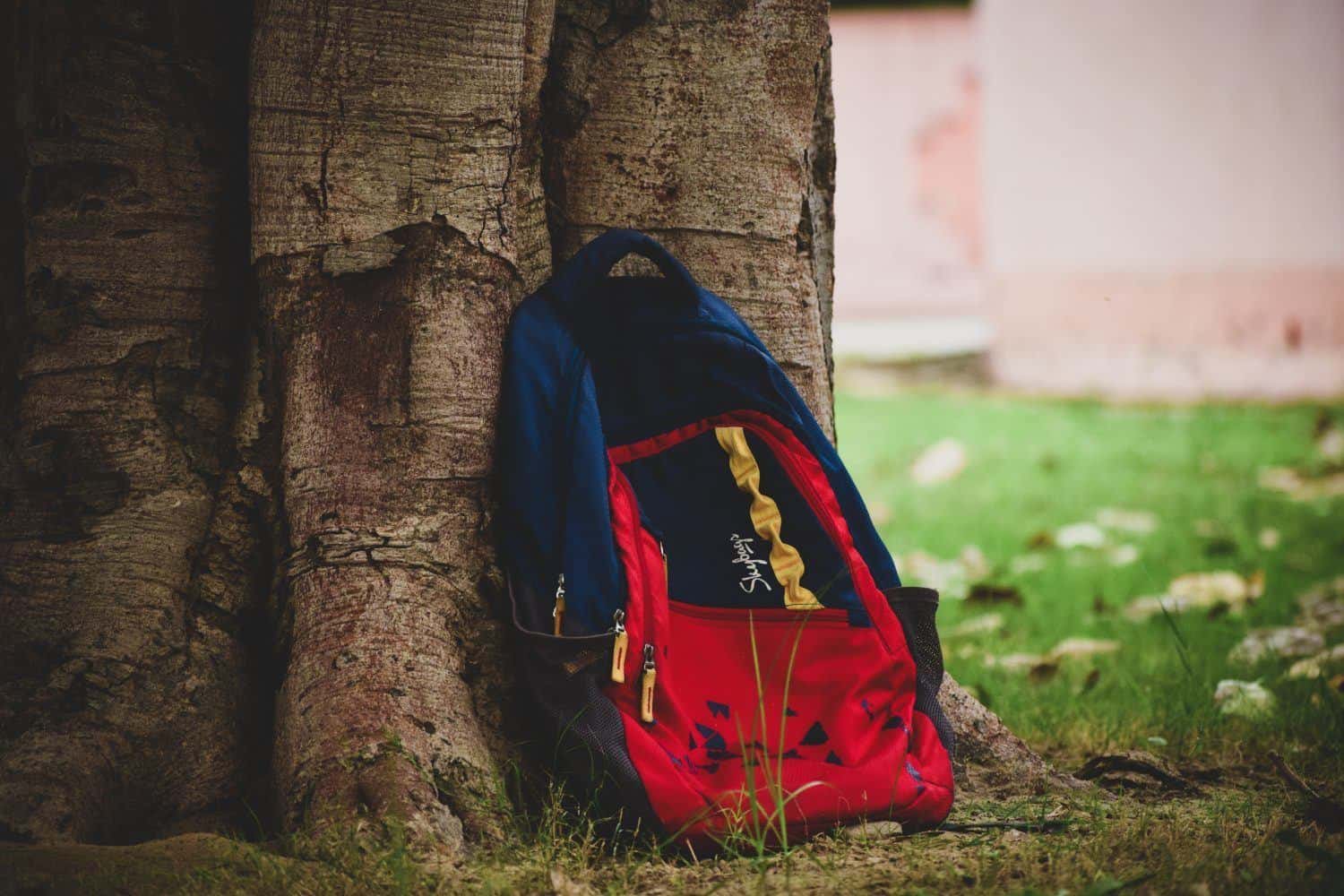
Rain Covers
This is a consideration you should undertake, especially if you are going to be traveling or hiking in areas where it is perpetually wet, or where it rains intermittently. Some backpacks have this functionality in-built, while for some other backpacks, you have to buy this attachment separately or it is provided as a large bag.
Organized Pockets
A lot of newer backpacks now feature a compartmentalized form, as opposed to the older backpacks where one large space holds everything atop each other. The new backpacks provide multiple access points to your main compartment (they could be at the sides, bottom or top) so that you can access the contents of your bag without rummaging into it and upsetting the order of things or unloading some of them.
Alternatively, you can make use of other accessories if you already have a favorite backpack and do not want to spend money on a backpack like this (the more the compartments, the more they will cost). To make the bag more organized, you can invest in dry, compression or stuff stacks. These will not only categorize the contents of your backpack but also make things more accessible for you, if you need them in a hurry, not to mention accurately.

The Final Word
This concludes our guide on, "how big a backpack do I need?" Always remember that choosing a backpack should always be based on your personal needs and not because someone asked you to go for a specific backpack size. Before committing to a particular backpack size, you should always make sure that it will contain all your necessities, all your travel and camping gear and still have a little space for that something extra.
Always opt for gear that is lightweight and comfortable to make you want to put that backpack on your back and go on to your next adventure!
